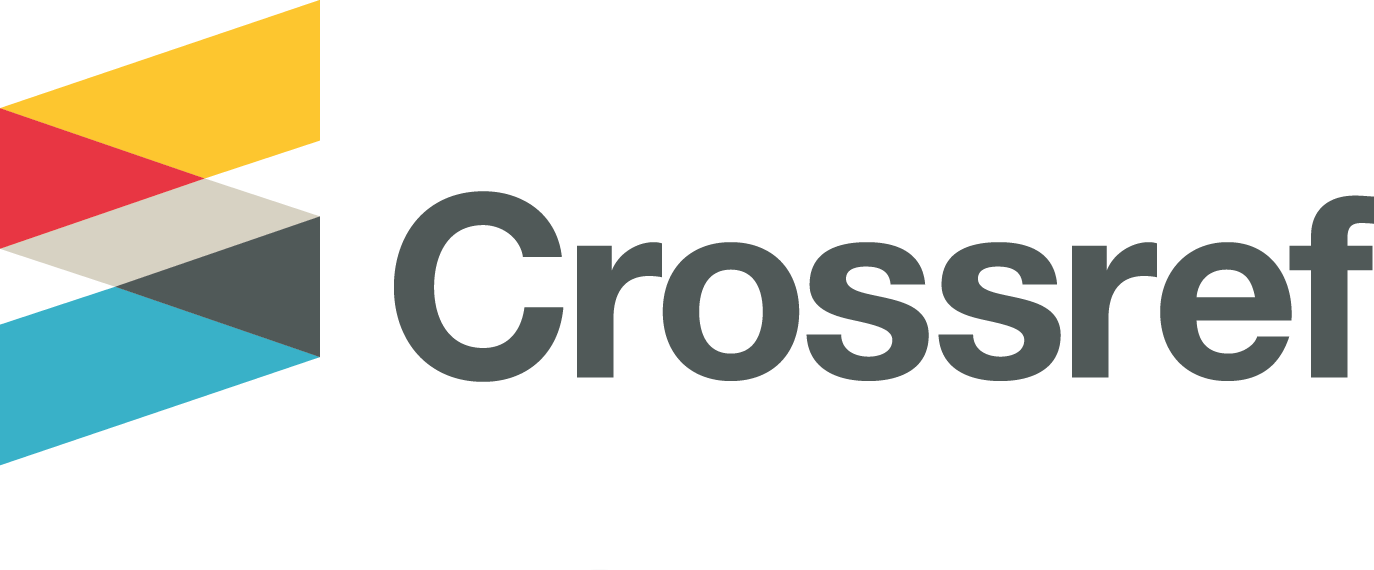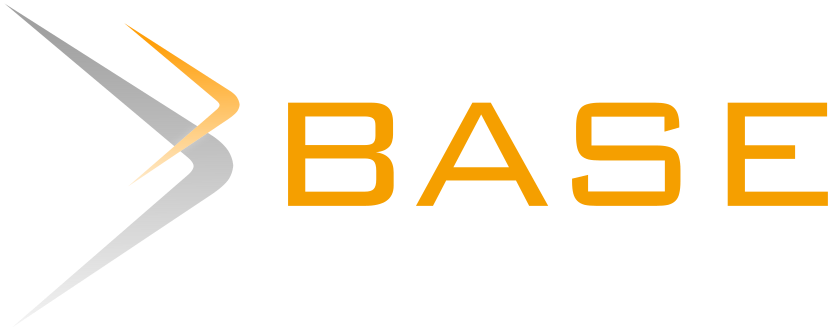Behind the Scenes of Instagram: The Relationship Between Self-Esteem and Narcissistic Tendencies Among Gen Z
Abstract
The phenomenon of Gen Z's existence is beginning to increase on social media, potentially giving rise to narcissistic tendencies, especially about the level of self-esteem that individuals have. This study aims to analyze the relationship between self-esteem and narcissistic tendencies in Gen Z on Instagram social media. The study used a quantitative approach with a correlational design, with a purposive sampling technique involving 148 Gen Z participants who actively use Instagram social media. Data collection was conducted using the Coopersmith Self-Esteem Inventory (CSEI) and the Narcissism on Social Media Scale (NSMS). The results of data analysis using Spearman correlation, showed a significant negative relationship between self-esteem and narcissistic tendencies (r = -0.645, p < 0.05). The lower the self-esteem, the higher the narcissistic tendencies on Instagram social media, and vice versa. The findings reinforce the view that narcissistic tendencies are often used as a compensation mechanism for low self-esteem. This study provides practical implications to help Gen Z understand the importance of improving self-esteem to prevent maladaptive narcissistic tendencies on social media.
Fenomena eksistensi Gen Z mulai meningkat di media sosial, berpotensi memunculkan kecenderungan narsistik, terutama berkaitan dengan tingkat self-esteem yang dimiliki individu. Penelitian ini bertujuan untuk menganalisis hubungan antara self-esteem dengan kecenderungan narsistik pada Gen Z di media sosial Instagram. Penelitian menggunakan pendekatan kuantitatif dengan desain korelasional, dengan teknik purposive sampling yang melibatkan 148 partisipan Gen Z yang aktif menggunakan media sosial Instagram. Pengumpulan data dilakukan menggunakan Coopersmith Self-Esteem Inventory (CSEI) dan Narcissism on Social Media Scale (NSMS). Hasil analisis data menggunakan korelasi Spearman, menunjukkan adanya hubungan negatif yang signifikan antara self-esteem dan kecenderungan narsistik (r = -0,645, p < 0,05). Semakin rendah self-esteem, semakin tinggi kecenderungan narsistik di media sosial Instagram, dan sebaliknya. Temuan memperkuat pandangan bahwa kecenderungan narsistik sering dijadikan mekanisme kompensasi atas self-esteem yang rendah. Penelitian ini memberikan implikasi praktis yang dapat membantu Gen Z dalam memahami pentingnya meningkatkan self-esteem untuk mencegah kecenderungan narsistik yang maladaptif di media sosial.
Keywords
Full Text:
FULL TEXTReferences
Akdeniz, S., Budak, H., & Ahçi, Z. G. (2022). Development of a scale of narcissism in social media and investigation of its psychometric characteristics. International Education Studies, 15(1), 200-209. https://doi.org/10.5539/ies.v15n1p200.
American Psychiatric Association. (2013). Diagnostic and statistical manual of mental disorders (5th ed.). American Psychiatric Publishing.
Azwar, S. (2021). Penyusunan skala psikologi. Pustaka Pelajar.
Back, M. D., Küfner, A. C. P., Dufner, M., Gerlach, T. M., Rauthmann, J. F., & Denissen, J. J. A. (2013). Narcissistic admiration and rivalry: Disentangling the bright and dark sides of narcissism. Journal of Personality and Social Psychology, 105(6), 1013–1037. https://doi.org/10.1037/a0034431.
Campbell, W. K., & Miller, J. D. (2011). The handbook of narcissism and narcissistic personality disorder: Theoretical approaches, empirical finding and treatments. John Wiley & Sons.
Clarke, I. E., Karlov, L., & Neale, N. J. (2014). The many faces of narcissism: Narcissism factors and their predictive utility. Journal Personality and Differences, 81(2015), 90-95. https://doi.org/10.1016/j.paid.2014.11.021.
Coopersmith, S. (1967). The antecedents of self-esteem. Freeman and Company.
Dewi, C. G., & Ibrahim, Y. Hubungan self-esteem (harga diri) dengan perilaku narsisme pengguna media sosial Instagram pada siswa SMA. Jurnal Neo Konseling, 1(2), 1-7. https://doi.org/10.24036/0099kons2019.
Dewi, N. P. S., & Soetjiningsih, C. H. (2023). Self-esteem and narcissism in Generation Z who like to create content on the Tiktok application. Jurnal Scientia, 12(02), 1225-1234. https://doi.org/10.58471/scientia.v12i02.1330.
Engkus, Hikmat, & Saminnurahmat, K. (2017). Perilaku narsis pada media sosial di kalangan remaja dan upaya penanggulangannya. Jurnal Penelitian Komunikasi, 20(2), 121–134. https://doi.org/10.20422/jpk.v20i2.220.
Elliya, R., & Rahma, A. (2020). Hubungan harga diri dengan gejala narsistik (narcisstic personality disorder) pada mahasiswa program studi pendidikan dokter Universitas Malahayati. Malahayati Nursing Journal, 2(2), 305-316. https://doi.org/10.33024/mnj.v2i2.1595.
Fauziah, R. N. (2020). Intensitas mengunggah konten media sosial Instagram dengan perilaku narsistik pada remaja awal. Psikoborneo: Jurnal Ilmiah Psikologi, 8(4), 562-571. http://dx.doi.org/10.30872/psikoborneo.v8i4.5562.
Hasanah, R. M., & Tumanggor, R. O. (2023). The relationship of self-esteem to narcissistic in teenagers using Tiktok social media during the Covid-19 pandemic. International Journal of Application on Social Science and Humanities, 1(1), 727-735. https://doi.org/10.24912/ijassh.v1i1.25938.
Horney, K. (1950). Neurosis and human growth: The struggle toward self-realization. W.W. Norton & Company.
Hu, Y., Manikonda, L., & Kambhampati, S. (2014, Mei). What we instagram: A first analysis of Instagram photo content and user types (Presentasi paper). 8th International AAAI Conference on Web and Social Media (pp. 595-598), Arizona State University, Arizona.
Indrajaya, S. E., & Lukitawati, L. (2019). Tingkat kepercayaan Generasi Z terhadap berita infografis dan berita ringkas di media sosial. Jurnal Komunikasi, 11(2), 169–182. https://doi.org/10.24912/jk.v11i2.5045.
Ismah, F. A., & Widayat, I. W. (2023). Efektivitas menggunakan self instruction dalam meningkatkan self esteem rendah pada remaja akhir. Psikoborneo: Jurnal Ilmiah Psikologi, 11(4), 583-591. http://dx.doi.org/10.30872/psikoborneo.v11i4.
Juwita, E. P., Budimansyah, D., & Nurbayani, S. (2015). Peran media sosial terhadap gaya hidup siswa. SOSIETAS: Jurnal Pendidikan Sosiologi, 5(1). https://doi.org/10.17509/sosietas.v5i1.1513.
Katkar, K., Brata, D. W., & Savitri, A. D. (2021). Narcissistic behavior in adolescent social media users. NUCLEUS, 2(1), 12-17. https://doi.org/10.37010/nuc.v2i1.188.
Khairat, M., & Adiyanti, M. G. (2015). Self-esteem dan prestasi akademik sebagai prediktor subjective well-being remaja awal. Gadjah Mada Journal of Psychology (GamaJoP), 1(3), 180-191. https://doi.org/10.22146/gamajop.8815.
Kumalasari, A. Y., & Rahayu, M. N. M. (2022). Self esteem dan citra tubuh pada wanita dewasa pasca melahirkan. Psikoborneo: Jurnal Ilmiah Psikologi, 10(4), 653. https://doi.org/10.30872/psikoborneo.v10i4.9099.
Laeli, A. N., Sartika, E., Rahman, F. N., & Fatchurrahmi, R. (2018). Hubungan kontrol diri dan harga diri terhadap kecenderungan narsistik pada mahasiswa semester awal pengguna Instagram. Psikologika: Jurnal Pemikiran Dan Penelitian Psikologi, 23(1), 27-40. https://doi.org/10.20885/psikologika.vol23.iss1.art3.
Margaretha, O., & Soetjinigsih, C. H. (2022). Self-esteem dengan narsistik pada remaja yang hobi foto selfie menggunakan filter Instagram. Jurnal Ilmiah Bimbingan Konseling Undiksha, 13(1). 31-39. https://doi.org/10.23887/jibk.v13i1.45012.
Mehdizadeh, S. (2010). Self-presentation 2.0: Narcissism and self-esteem on facebook. Cyberpsychology, Behavior, and Social Networking, 13(4), 357-364. https://doi.org/10.1089/cyber.2009.0257.
Musarrat, R., Ahmed, S., Munir, F., Riaz, S., & Hayat, N. (2022). Digital narcissism, self-esteem and self-objectification among Snapchat vs. Facebook users. Journal of Positive School Psychology, 6(9), 3128-3141.
Napoleoncat.com. (2022). Social media users in Indonesia. Diakses 7 Mei 2024 dari https://napoleoncat.com/stats/social-media-users-in-indonesia/2022/.
Nasrullah, R. (2017). Media sosial: Perspektif komunikasi, budaya, dan sosioteknologi. Simbiosa Rekatama Media.
Permadi, D. A., & Dairobi, M. N. (2021). Self esteem dan risk taking behaviour dengan perilaku narsistik remaja pengguna media sosial. PSYCOMEDIA: Jurnal Psikologi, 1(1), 29-37. https://doi.org/10.35316/psycomedia.2021.v1i1.29-37.
Permadi, D. A., Noviekayati, I. G. A. A., & Meiyuntariningsih, T. (2020). Hubungan antara risk taking behavior dan harga diri dengan perilaku narsistik remaja penggunan Instagram ditinjau dari tipe kepribadian. Psikosains: Jurnal Penelitian dan Pemikiran Psikologi, 14(2), 115-131. http://dx.doi.org/10.30587/psikosains.v14i2.1273.
Purnamasari, A., & Agustin, V. (2019). Hubungan citra diri dengan perilaku narsisisme pada remaja putri pengguna Instagram di Kota Prabumulih. Psibernetika, 11(2). http://dx.doi.org/10.30813/psibernetika.v11i2.1438.
Putri, A. F., Rifayanti, R., & Ramadhani, A. (2024). Mengungkap kaitan antara harga diri dan konsep diri : Mengungkap studi korelasi pada wanita korban catcalling. Psikoborneo: Jurnal Ilmiah Psikologi, 12(3), 371-377. http://dx.doi.org/10.30872/psikoborneo.v12i3.
Rahmawati, A., Cahyani, B. H., & Putrianti, F. G. (2023, Agustus). Self-esteem and tendencies of narcism behavior of Twitter users (Presentasi paper). 1st International Conference on Psychology, Health and Humanity (pp. 118–128), Universitas Sarjanawiyata Tamansiswa, Yogyakarta.
Raskin, R., & Terry, H. (1988). A principal-components analysis of the Narcissistic Personality Inventory and further evidence of its construct validity. Journal of Personality and Social Psychology, 54(5), 890-902. https://doi.org/10.1037/0022-3514.54.5.890.
Rokhmatika, N. (2024). Pengembangan instrumen self-esteem Coopersmith (citra diri). Jurnal Literasi Indonesia, 1(1), 1-8.
Rosenberg, M. (1965). Society and the adolescent self-image. Princeton University Press.
Sedikides, C., Rudich, E. A., Gregg, A. P., Kumashiro, M., & Rusbult, C. (2004). Are normal narcissists psychologically healthy?: Self-esteem matters. Journal of Personality and Social Psychology, 87(3), 400-416. https://doi.org/10.1037/0022-3514.87.3.400.
Seemiller, C., & Grace, M. (2016). Generation Z goes to college. Jossey-Bass.
Setiasih, S., & Puspitasari, F. I. (2015). The adolescents needs to post photos and videos in Instagram. Jurnal Psikologi Ulayat, 2(2), 461–472. https://doi.org/10.24854/jpu38.
Siregar, D., Aditya, T., Purwanto, E., & Elyana, K. (2024). Pengaruh media sosial Instagram terhadap perubahan dalam gaya hidup Gen Z di Kota Tangerang. Jurnal JTIK (Jurnal Teknologi Informasi Dan Komunikasi), 8(3), 605–618. https://doi.org/10.35870/jtik.v8i3.2060.
Sissoko, O. A. A., & Prasetyawati, H. (2022). Kebutuhan gaya hidup Generasi Z terhadap perilaku narsis di Instagram. Matriks: Jurnal Sosial Dan Sains, 4(1). https://doi.org/10.36418/matriks.v4i1.128.
Sugiyono (2019). Metode penelitian pendidikan pendekatan kuantitatif, kualitatif dan R&D. Alfabeta.
Wahyuni, F. R., Widyastuti, & Nurdin, M. N. H. (2022). Hubungan antara harga diri dan kecenderungan perilaku narsistik pengguna instagram pada dewasa awal. PESHUM: Jurnal Pendidikan, Sosial dan Humaniora, 1(6), 639-653. https://doi.org/10.56799/peshum.v1i6.968.
Wearesocial.com. (2024). Digital 2024. Diakses 7 Mei 2024 dari https://wearesocial.com/id/blog/2024/01/digital-2024/.
Weiser, E. B. (2015). #Me: Narcissism and its facets as predictors of selfie-posting frequency. Personality and individual differences, 86, 477-481. https://doi.org/10.1016/j.paid.2015.07.007.
Williams, J. S. (2016). When social anxiety and narcissism coincide: An exploration of narcissistic social anxiety subgroups (Tesis tidak dipublikasikan). Swinburne University of Technology, Melbourne.
Yudhistira, A. W. (2021, 16 Mei). Instagram, media sosial favorit Generasi Z. Diakses 7 Mei 2024 dari https://databoks.katadata.co.id/datapublish/2021/05/16/instagram-media-sosial-favorit-generasi-z.
DOI: http://dx.doi.org/10.30872/psikoborneo.v13i3.19901
Refbacks
- There are currently no refbacks.
Copyright (c) 2025 Yabes Mahanaim Harod, Maria Goretti Adiyanti

This work is licensed under a Creative Commons Attribution-ShareAlike 4.0 International License.
PSIKOBORNEO: Jurnal Ilmiah Psikologi Published by Faculty of Social and Political Siences, University of Mulawarman, Samarinda, East Kalimantan and This work is licensed under a Creative Commons Attribution-ShareAlike 4.0 International License.
________________________________________
PSIKOBORNEO: Jurnal Ilmiah Psikologi
Department of Psychology
Faculty of Social and Political Siences, University of Mulawarman
Jl. Muara Muntai Kampus Gn. Kelua Samarinda 75411
Phone: +62 813 35350368
E-Mail: psikoborneo@gmail.com / psikoborneo@fisip.unmul.ac.id
















